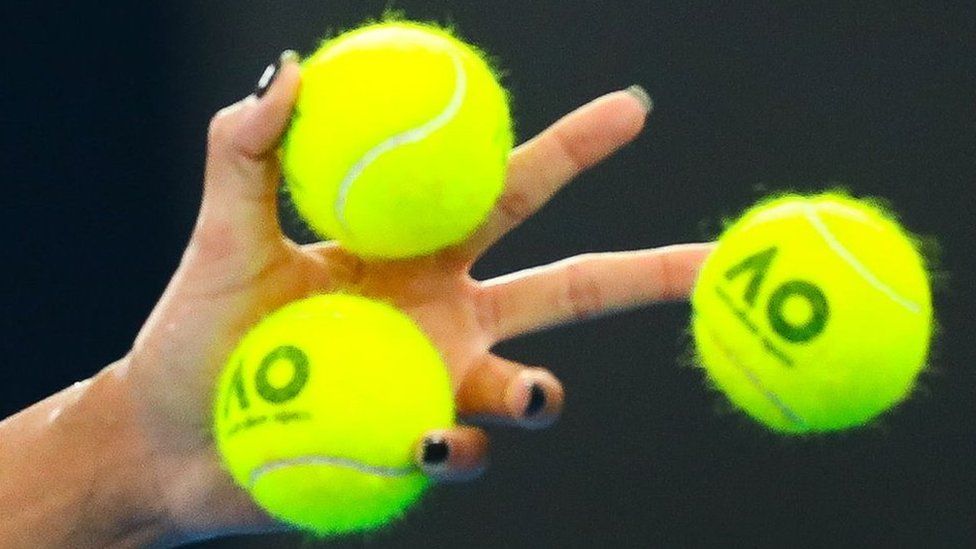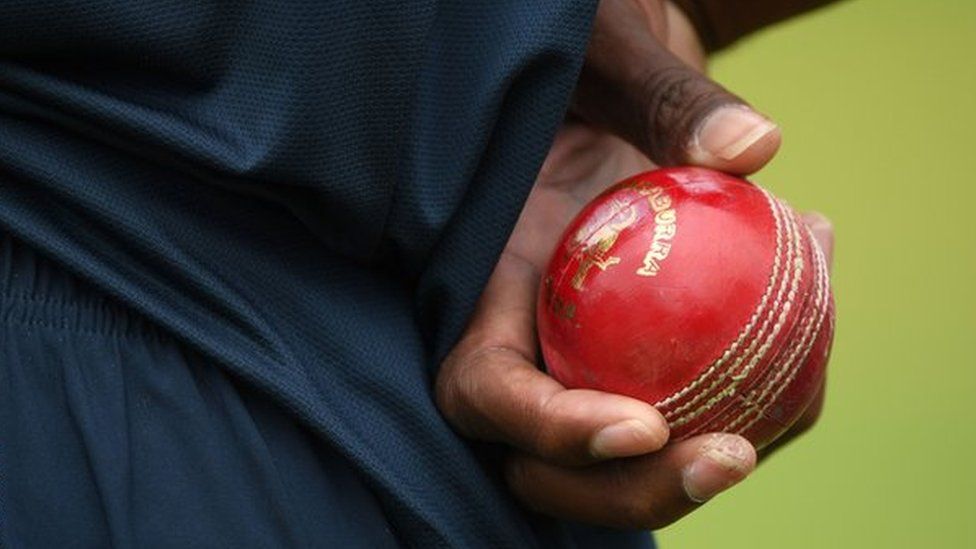
The risk of coronavirus transmission from sharing sports equipment is "lower than once thought", a study suggests.
Researchers, led by Liverpool School of Tropical Medicine, applied live virus particles to nine types of sports equipment and a control material.
They concluded it "seems unlikely" that sports balls and accessories are a major cause for transmission.
Prime Minister Boris Johnson said last June that cricket balls are a "natural vector" of coronavirus.
The Strike study found the virus was least transferrable on absorbent materials like cricket gloves and tennis balls, compared with non-porous equipment like racing saddles and rugby balls.
The researchers found that there was "rapid decay" of viral particles across several types of equipment, and it was "very difficult" to transfer live virus back off it.
"Close contact" between players is likely to be a more important mode of spreading the virus than sharing equipment, researchers concluded.
James Calder, from Imperial College and Fortius Clinic, said: "The findings in this study are important not only for elite athletes, but also for community sports and our schools.
"It shows that the risk of transmission when sharing sports equipment is lower than was once thought and it highlights the importance of promoting other infection control measures in sports, whilst urging equipment manufacturers to identify surfaces that may be less likely to retain viable virus."
'Focus on players, not equipment'
During the study a low dose and a high dose of live coronavirus was applied to a cricket glove, a football, a golf ball, a piece of gym pit foam, a horse saddle, both red and white cricket balls, a rugby ball and a tennis ball, as well as a piece of stainless steel as a control material.

Each was tested after one minute, five minutes, 15 minutes, 30 minutes and 90 minutes, to see whether live virus could be transferred off the equipment at time points that were relevant to sports events.
When the low dose was applied, virus was recoverable on seven of the 10 items tested after one minute, one of the 10 after five minutes - the horse saddle - and none of the 10 after 15 minutes.
When the high dose was applied, virus was recoverable on nine out of the 10 items after one and five minutes - all except the cricket glove - six out of 10 after 30 minutes, and two out of 10 after 90 minutes (the rugby ball and horse saddle).
However, the study - which is awaiting peer review - found that the "mean recovery of the virus fell across all materials to 0.74% at one minute, 0.39% at 15 minutes and 0.003% at 90 minutes".
Dr Emily Adams, a senior lecturer at the Liverpool School of Tropical Medicine, said: "Anything that is slightly absorbent like a tennis ball or some of the leathery cricket balls, it's very difficult to transfer any live virus off those. So we think that transmission from sports equipment is probably very low in these cases.
"Basically in many sports, like tennis, really the public health intervention should be focused on players and how players interact before a game, during a game and after a game and in transport rather than the sports equipment itself."
The study found there was a "noticeable" difference in the viral recovery of red and white cricket balls.
"Despite the white and red cricket ball surfaces both being composed of bovine leather, the different coatings used to finish the surfaces (synthetic grease on the red ball, nitrocellulose on the white ball) had a noticeable effect on viral recovery, with the red ball having a lower level", it says.
The study concludes that, given the differences in virus transfer between the types of sports equipment, the findings could "direct the engineering of materials that retain and absorb virus" as opposed to water-repellent materials, where the ability to transfer virus particles back off a surface is greater.

- SYMPTOMS: What are they and how to guard against them?
- YOUR QUESTIONS: We answer your queries
- TREATMENTS: What progress are we making to help people?
- EPIDEMIC v PANDEMIC: What's the difference?
- LOCKDOWN TIPS: Five ways to stay positive

https://ift.tt/37h8wEv
Sport
Bagikan Berita Ini















0 Response to "Covid-19: Sports equipment presents 'low risk' - BBC News"
Post a Comment